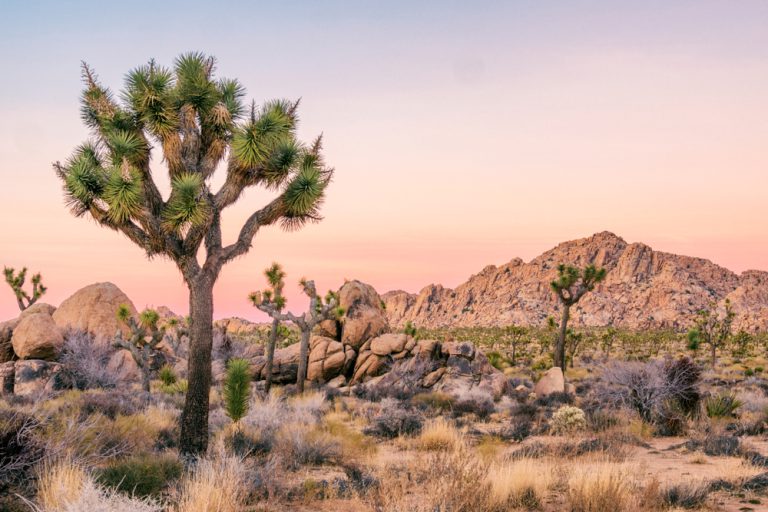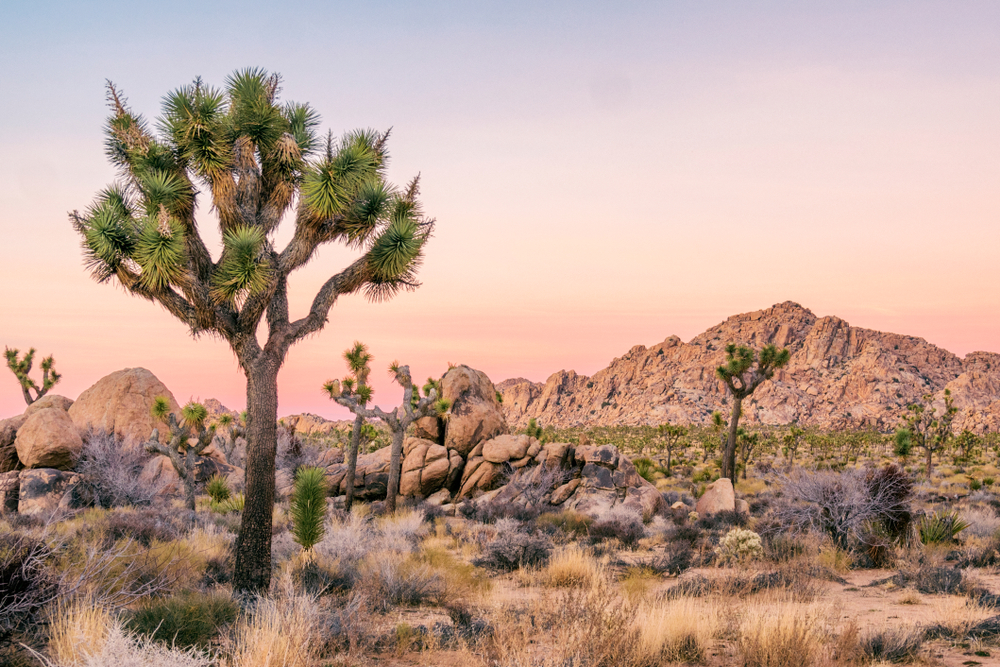
Easily one of the most otherworldly landscapes our nation has to offer, Joshua Tree National Park is truly a desert destination like no other. Named for its strange and spiky “trees” — which are actually not trees but plants in the same family as yucca — this southern California desert is miles away from the Orange County glitz and development that so many associate with this part of the country, both physically and metaphorically.
In fact, two distinct desert landscapes, the Mojave and the Colorado, blend together here to create this unique ecosystem. It’s no surprise it’s such a popular place, in other words: in 2020, annual visitorship reached 2.4 million, making it the 10th most-visited national park on our nation’s roster.
But despite its apparent inhospitability, the place we now call Joshua Tree as hosted and sustained human inhabitants since time immemorial. This landscape has been an important touchstone for a variety of Native American tribes over the centuries, including Cahuilla, Chemehuevi, and Serrano people, as well as the ancient Pinto culture that preceded them. Here is just a little bit of their story.
The Indigenous History of Joshua Tree National Park

About 10,000 years ago, the Pleistocene Epoch was coming to a close — and the earth was changing. Glaciers were melting, forming lakes, rivers, and swamps where today dry land exists. Even here, in the southern California desert, ancient peoples would have found grasslands that fed valuable game animals including mastodons, mammoths, and bison.
Evidence suggests that the Pinto Basin — home to one of the main highways through Joshua Tree National Park — was occupied by ancient Native Americans some four-to-eight thousand years ago. Notched, pointed arrowheads were found here by amateur archeologists William and Elizabeth Campbell in the 1930s, leading them to believe that this area once flowed with a river and served as a valuable hunting grounds to ancient Natives.
Over the centuries, the earth continued to change, but even as the landscape dried out, savvy Native Americans were able to travel through and camp in this place as part of their seasonal, nomadic hunting lifestyle. The land remained fertile, and Indigenous people knew how to find and use its many gifts, including acorns, mesquite pods, pinyon nuts, seeds, berries, and cactus fruits. Additionally, local bighorn sheep, deer, rabbits, birds, amphibians, and reptiles were all hunted for game meat, and both plant and animal matter could be used to forge the materials necessary for daily life.
Many archeological sites proclaiming the prevalence of these ancient peoples still dot the landscape today, including pictographs and petroglyphs. For more information, consult a Park Ranger during your time at the park.
Paying Respect to the Land
Learning about the Indigenous History of our national parks is an important way to get grounded in the overall context of a place. Particularly as western visitors without Native American heritage, we’re always necessarily occupying someone else’s land when we visit these wildernesses (and, honestly, our cityscapes); write-ups like these can be a great resource, as is Native Land, a free website that will give you more information about whose ancestral grounds you’re visiting.
Along with reading up on the Indigenous culture of a place, though, we must also do our part by continuing the precedent of stewardship those cultures set for us for centuries. Taking care of a place not only ensures it continues to be beautiful and habitable for future generations, but also serves as a nod of respect to the generations of the past.
Leave No Trace offers seven excellent an easy-to-enact principles that will help ensure you leave every wilderness you visit just as beautiful as, or even better than, you found it. For instance, these principles include traveling and camping only on durable surfaces and ensuring you minimize your campfire impacts, as well as packing out all the garbage you pack in.
It’s a small price to pay for ensuring the ongoing health and beauty of Joshua Tree National Park — or any of our national parks and wildernesses, for that reason. Enjoy your stay in these hallowed lands, and remember: you’re far from the first to stand in awe of their beauty.

